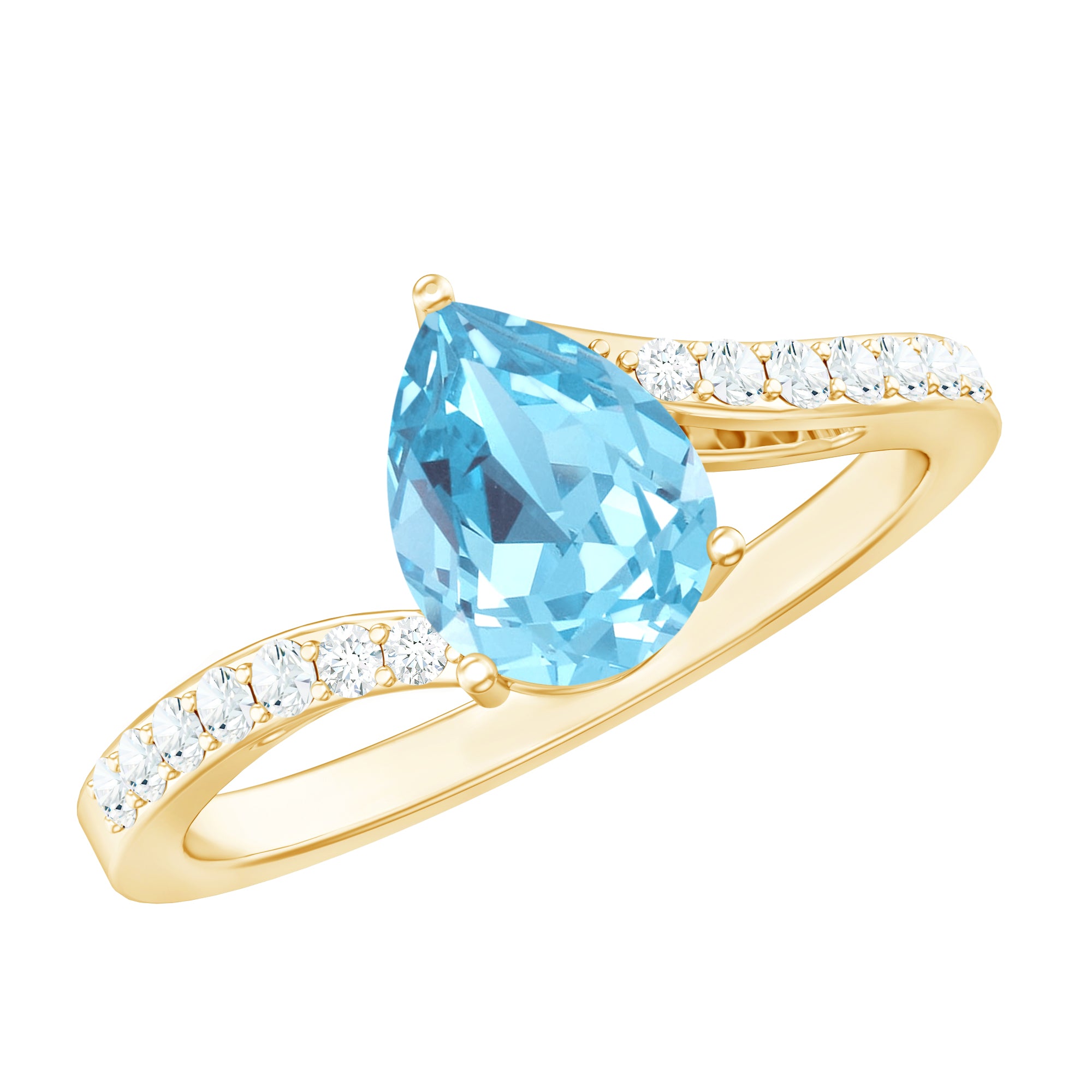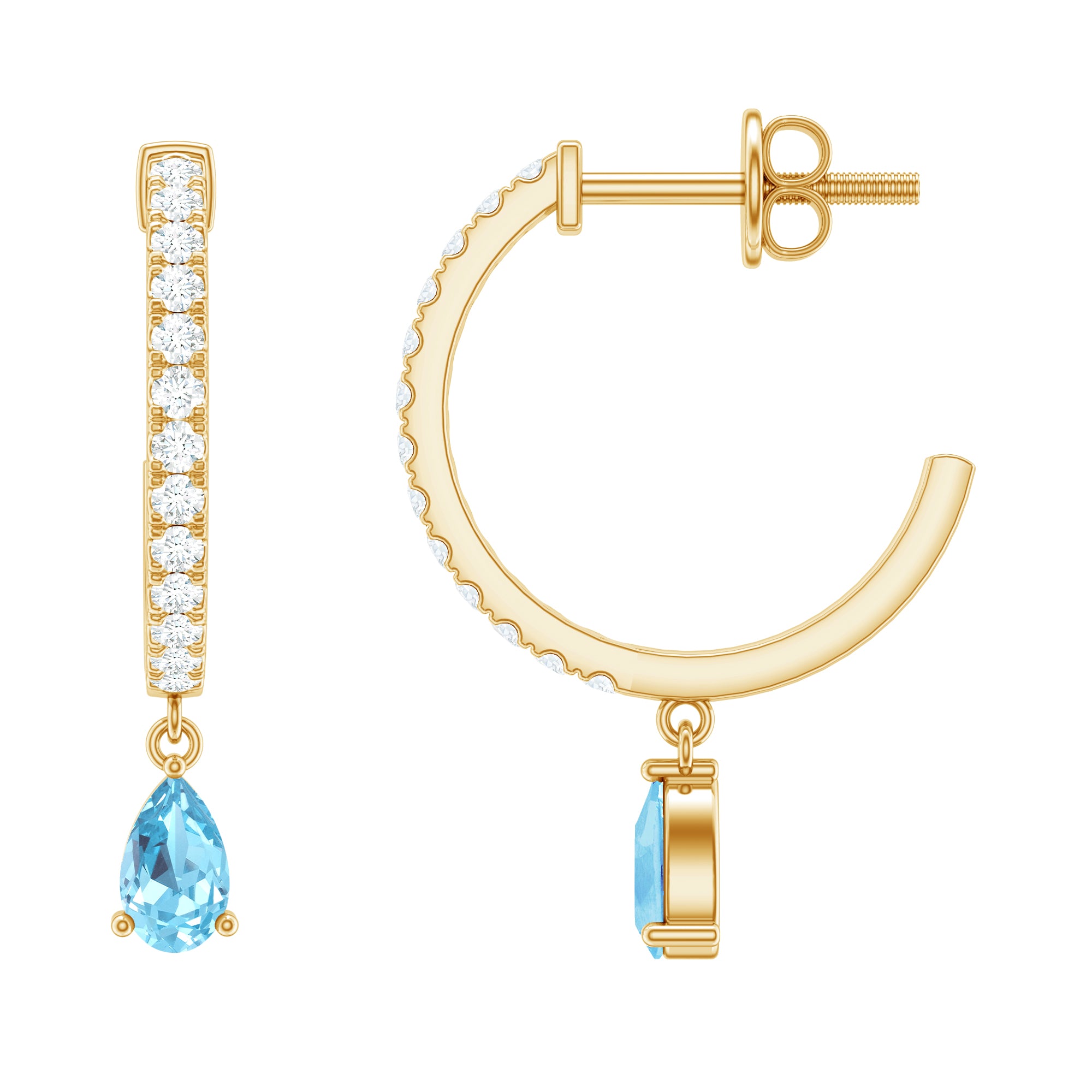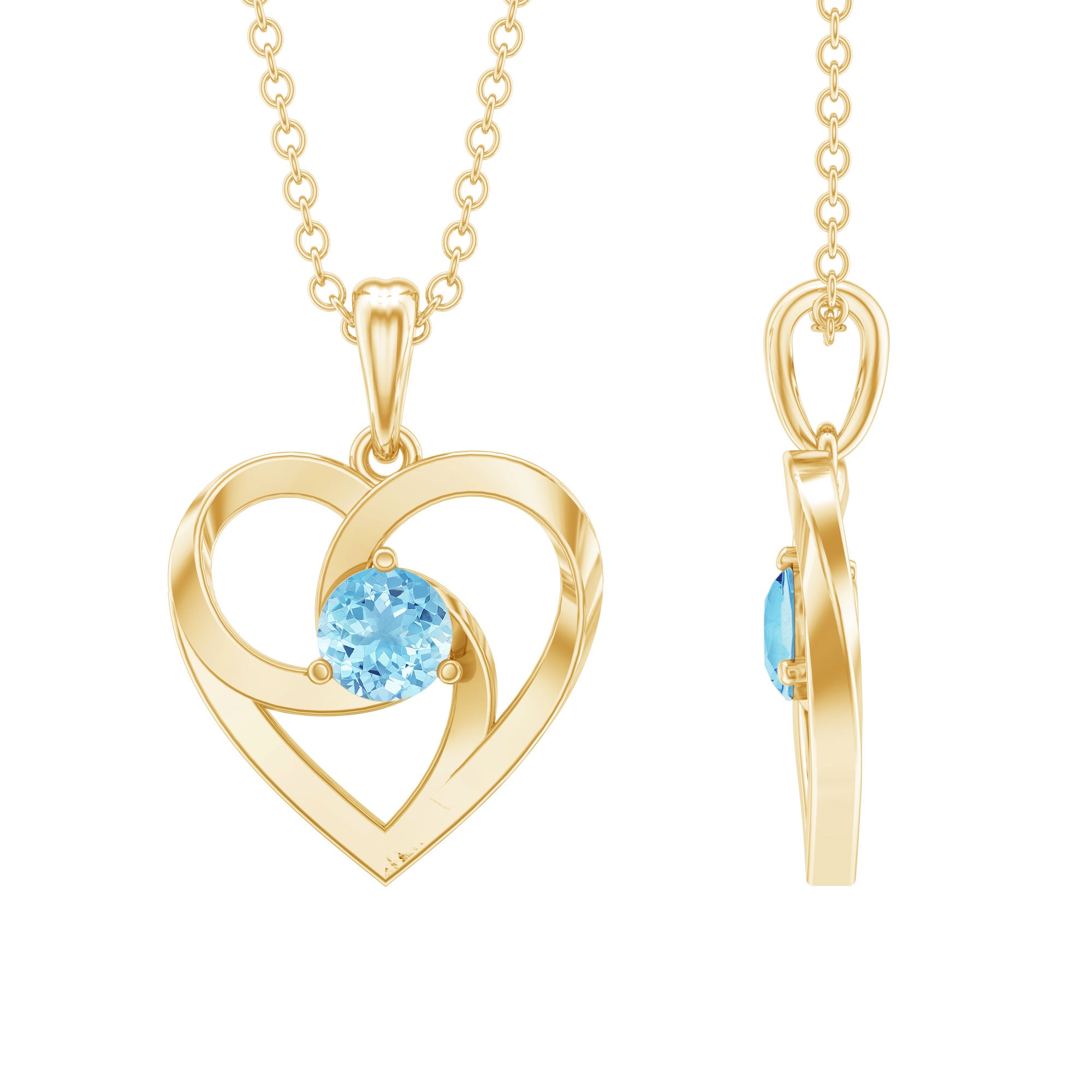All About Aquamarine: Types, Colors, Description, Origins & Details
Who doesn’t love the color of sky and sea?
Sea Blue: Serene, peaceful and just mesmerizing! And that’s just how we’d label the March birthstone beauty: Aquamarine. Donning this semi-precious gemstone would surely make you feel like a pretty mermaid! The name itself has been derived from ‘aqua’ which means water and ‘marine’ which means sea! But looking at this precious beauty in blue, haven’t you ever gotten curious to know everything under the roof about it? The more beautiful the gemstone, the more curious we are to get to know it better, isn’t it? Well, being well versed with that we have come up with our Aquamarine education guide to help you buy aquamarine and make you well versed with its fun history, meaning and typically anything and everything. We address all the basic knowledge revolving around aquamarine and the famous 4 C’s of the Birthstone of March to make a prudent decision while setting out to buy aquamarine jewelry. What are you waiting for? Hop on to our Aquamarine educations guide:
Properties of Aquamarine
Hardness
Having a hardness rating of 7.5 to 8 on Moh’s scale, Aquamarine is a pretty durable gemstone, thus making it withstand the wear and tear of regular use. You can wear this blue beauty any day, everyday!
Colors
Belonging to the family of Beryl and thanks to the presence of iron impurities, Aquamarine is known to be bluish-green in color. Royal and serene, right?
Luster
The luster of Aquamarine is labeled as vitreous and is known to the world for its top notch transparency.
Origin & History
The history of this semi precious March birthstone beauty dates back to early 1700s and it of course, comes with its share of fascinating tales and beliefs. Thanks to its serene blue color, it was highly regarded by ancient Romans and Greek as the ‘sailor’s gem’ since it was believed to provide safety while travelling by sea. In fact, Aquamarine was believed to be so heavenly that was believed to be carved by the god of sky Poseidon out of seawater. Apart from that, it was also believed to restore broken bonds and aroused love between couples since Medieval times. Our Aquamarine guidess just got more engrossing, right?
Where is Aquamarine found?
Well, this March birthstone is typically mined in Brazil, Zambia, Nigeria, Mozambique, Madagascar and Pakistan. Talking about its specific formation, Aquamarine is known to be formed under intense temperatures in Pegamite rocks when they get in touch with Magma, a hot fluid under the earth’s crust. Yes, that’s how complex the formation of an Aquamarine gemstone is.
Aquamarine versus Blue Topaz
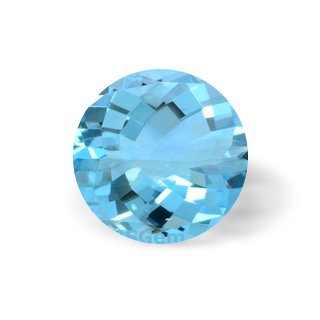
Aquamarine
Well, aquamarine is known to be naturally blue in color and is treated to further enhance its beauty with color ranging from light blue-green to dark blue. Basically, it has a hint of green color as well.Other than that, Aquamarine is known to be more on the pricey side.
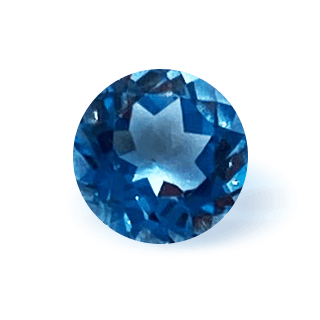
Blue Topaz
Blue Topaz is treated to get its rich blue color with color ranging from faint blue to deep blue. It is less expensive than Aquamarine and is known to be more heat treated than it.
Aquamarine Quality and Price Filters
Thinking how to buy Aquamarine jewelry having top notch quality? Well, quality is the first thing we look at while buying a gemstone! Knowing that, don’t you think you should also be able to judge the quality of your jewelry? Well, quality is typically determined by the 4 Cs (cut, color,clarity and carat). Take a glance:
Color
The color of Aquamarine is pastel blue or greenish blue. Like all the other colored gemstones, color is an important factor while grading aquamarines and can vary widely. Therefore hue and intensity play an important part while buying an aquamarine rather than inclusions. Mostly, dark blue to slight greenish-blue without any inclusion are regarded as the best.
Clarity
The grade of clarity for any gem is related with the inclusions and blemishes occurring in the a gemstone. However, in case of Aquamarines it is difficult to observe such defects because of its color and translucency. Although, clarity can directly determine the price of the Aquamarine yet usually they are found to be nearly flawless. Any cutting or treatment offered to such gemstones would eventually push them towards perfection.
Carat
The weight of aquamarines is measured in terms of Carat Weight usually shortened to Carat or Cts and it typically ranges between 0.01 to 2 CT in our collection. it must also be kept in mind that there are 5 CTs in 1 Gram.
Cut
The cut of an aquamarine determines the overall color and brilliance of the gemstone. Therefore, any skilled cutter keeps in mind the overall shape, width, depth and faceting of an aquamarine. The skills of the cutter contribute to the beautiful sparkle of the gem as much as the conditions which led to its formation. Generally aquamarine that have an excellent cut grade will also have an excellent polish grade.
Aquamarine Grading Value
AAAA-A
We certainly think being well versed with a grading system helps you judge the quality of Aquamarine better. And what is our Aquamarine guide here for? Let’s give you an idea of the grading system:
AAAA
Here we come to the most valuable and sought after category of Aquamarine. Quite rare too since only top 10% of Aquamarine belong to this category. Possessing eye clean clarity and deep sea blue-green color, these type of Aquamarine have an irresistible charm that you’re sure to delve into its serene beauty.
AAA
Being slight included along with moderate to deep sea blue color, the top 20-30 % of Aquamarine belong to this category.
AA
The top 50-70 % of Aquamarine belonging to this category, have moderate inclusions along with lighter blue color.
Having discussed the knows and hows of Aquamarine, don’t you feel better educated with this serene gemstone? That’s the entire point of our Aquamarine education guide after all! We’re here to help you take better decision while purchasing Aquamarine Jewelry.
Benefits of Aquamarine
Well, this March birthstone comes with its share of perks as well and why not? It’s been hailed as a heavenly gemstone symbolizing serenity, clarity and harmony since time immemorial. Let’s give you a glance at the wholesome benefits of this beauty in blue:
Physical Healing
Aquamarine is known to possess pretty lucrative physical healing benefits including strengthening of immune system, helping with eye sight problems, healing of Thyroid, lung problems and breathing issues.
Emotional Healing
Probably the gemstone that dominates in this sector. A mere glance at this serene March birthstone is enough to tell you that! Aquamarine is known to reduce stress, help the wearer heal from prolong emotional trauma, thus bringing peace and balance in their life. Heavenly indeed!
Spiritual Healing
Did you know it was believed to protect soldiers in the battle field and sailors in sea according to historical folklore? Apart from that, it is also known to revoke the feelings of love. Yes, such has been the craze for Aquamarine since time immemorial and that’s why it is known to be a gem of good luck, protection and fearlessness.
Frequently Asked Questions
How is an Aquamarine formed?
Aquamarine took its form deep inside the earth. This gemstone can form in a variety of rock but mainly in igneous and metamorphic rock. Since Beryllium is quite rare, one can say that the beryl resulting will be rare as well. The presence of iron in the the gemstone impart the greenish-blue color to Aquamarine.
What is difference between lab grown and natural Aquamarines?
Like most of the gemstones, there is an option to choose between natural and lab-created Aquamarines. One must not confuse “lab grown” with the “fake”. While synthetic is a replica the lab grown is developed in a controlled lab environment.
However, the main difference found between a natural and a lab created aquamarine is the number of inclusions and the lesser price of the latter.
Where do Aquamarines come from?
Aquamarine was first spotted in Siberia in the 18th Century and by now the main deposits of the sea blue gemstone can be found in Pakistan and Brazil. Other notable locations of aquamarine mining include China, California, Colorado, Myanmar, Ukraine and Africa.
How to take care of Aquamarine Jewelry?
Aquamarine Jewelry is quite easy to clean due to their hardness and durability. However, a few things must be kept in mind like avoiding contact of the gemstone with make-up, harsh chemicals, abrasives.
While cleaning the jewelry make use of lukewarm water and mild cleaning detergent. Soft toothbrush can be used to clean the underside of the Aquamarine.
Also, the jewelry must be individually kept to avoid contact with other jewelry to avoid unnecessary scratches.
What is a Aquamarine certification?
The most common Aquamarine Certifications includes from GIA, SGL and HRD labs. It is usually a document you receive on the behalf of the aforementioned 3rd party labs which describes an aquamarine in all of its characteristics.
Each and every party’s defining grounds may defer.
Can Aquamarine be worn daily?
Yes, without a shred of doubt! Aquamarine is known to possess a hardness of 7.5-8 on Moh’s scale, which makes it a pretty durable gemstone, perfect to be worn on a regular basis since it can withstand the wear and tear of daily use with much ease.
Can Aquamarine be put into water?
Water alone cannot harm Aquamarine but since the prolong exposure to chemicals can, it is advisable to remove it while taking a shower or going inside the swimming pool.
What is the best cut for Aquamarine?
While Aquamarine comes in a number of different shapes and sizes, Emerald, princess and pear cut are the favorite out of the lot since they are believed to enhance the brilliance and color of this March birthstone the best.
Conclusion
The serene, lifelike and heavenly beauty of Aquamarine is known to the world! Being extra lucky for all the March babies out there, the sea-blue beauty of Aquamarine is something none of us can resist. Prettier the gemstone, more curious we get to know it well. And why not? Since you’re spending your hard earned money, we say you must be aware of everything under the roof about your gemstone. That’s what our aquamarine buying guide is here for. We’ve tried to cover everything under our radar from the meaning and history to the famous 4 Cs and properties of this beauty in our aquamarine education guide. We hope you had fun and wish you all the luck in picking your favorite.


